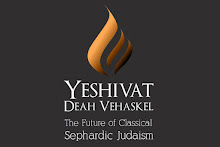The last few posts have served to introduce the themes and principles of the first nine books of the Mishneh Torah, identifying the areas of human existence these books address and the general direction in which they coordinate and guide the various aspects of our individual and communal developmental process. We conclude this component of our analysis of the Rambam with this post, which examines Books 10-14 in the same light:
10. SEFER TAHORAH: THE BOOK OF PURITY
This book includes the mitsvot that pertain to ritual purity, i.e., the state of purity that is a prerequisite for entry into the Temple. The depth and profundity of what the Bet Hamikdash represents would become diluted if we were permitted to access it freely. Inasmuch as true closeness to G-d can only be acquired after a high level of purification in thought and deed has been achieved, some standard of “preparation” must be required of us before we experience the symbolic closeness to G-d that is symbolized in the Temple. Like all aspects of the national avodah, this preparation must be translated into physical rather than spiritual terms so that it can be approached in an official, legal capacity and can be enforced consistently. (Our personal spiritual development and purity cannot be seen, touched, or felt; they defy any quantification or subjection to formal “rules”.)
11. SEFER NEZIKIN: THE BOOK OF DAMAGES
This book includes mitsvot that pertain to interactions between human beings that in the words of the Rambam, “involve damage from the beginning.” Simply put, this refers to relationships that begin because of a mishap – we may never have interacted with certain individuals had we not gotten into a car accident with them, etc. In this book, we transition from the spiritual aims of the nation to the material dimension of society – just as we transitioned from spiritual to physical at the individual level. This book addresses the problem of damage; the most basic principle of community is to do no physical harm to others. The process of training ourselves to respect the rights of others and not to interfere with or undermine their pursuit of financial success requires a book of its own.
12. SEFER KINYAN: THE BOOK OF ACQUISITION
This book includes mitsvot that pertain to the sale and purchase of property of various kinds. In a free market economy, competition for wealth often becomes the focus of a society. This obsession with material possessions holds us back from seeking the true good, i.e., knowledge of and closeness to the Creator. This is similar to the Book of Holiness mentioned above, which addresses our personal biological drives and their potential to supplant our religious strivings. Here, it is the social “impulse” to divide and conquer that must be reckoned with. This book teaches us how to apply Halacha to this aspect of our lives so that the pursuit of money and things does not interfere with our pursuit of the true good.
13. SEFER MISHPATIM: THE BOOK OF ORDINANCES
This book includes the mitsvot that pertain to financial dealings that are independent of damages, such as partnerships, loans, etc. Like the previous two books, Sefer Mishpatim is focused on the economic dimension of our lives. Sefer Kinyan and Sefer Nezikin both discuss circumstances in which individuals operate independently of one another and either (a) simply avoid hurting one another OR (b) trade goods with one another. Sefer Mishpatim, however, addresses situations that involve human relationships by definition, such as loans (where a lender and a borrower create a relationship with one another, rather than simply exchanging money or objects.) The mitsvot in this book teach us how to structure our business relationships with others in ways that are consistent with the principles of justice.
14. SEFER SHOFETIM: THE BOOK OF JUDGES
This book includes mitsvot that pertain to the government of Israel, including the Sanhedrin and its Judges, the King and his wars, etc. All of the elements of Jewish living – individual and national – have been dealt with in the previous thirteen books. The complexity of the Torah system can only become an integrated entity through the medium of a strong government that can maintain and balance the personal and national, spiritual and physical components of society, enforcing its laws and structure. This government is specially designed to be an effective institution on the practical level while remaining devoted to and squarely focused upon the philosophical vision of the Torah.
Taken together, the fourteen books of the Mishneh Torah describe every aspect of human life that has the potential to derail our growth as individuals and communities, and teaches us how to calibrate these dimensions of our existence with our understanding of Hashem’s wisdom so we can live fully principled, enriching and productive lives.
Wednesday, February 04, 2009
Subscribe to:
Posts (Atom)
